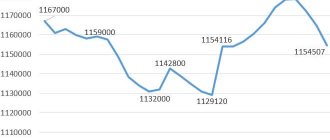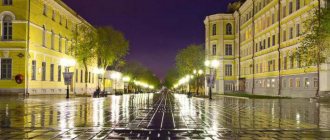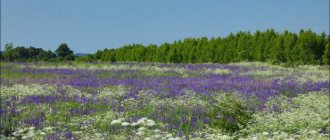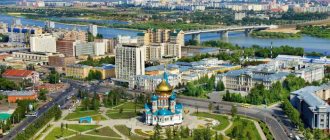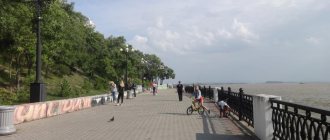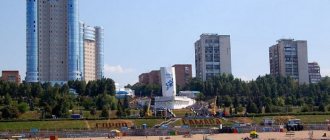The Republic of Karelia is located in the north-west of our country. This region is culturally unique, because the Slavic population here is adjacent to the Finnish, and the Catholic population is adjacent to the Orthodox. The indigenous ethnic groups of the Republic - Vepsians and Karelians - have their own written language and language, which is studied in schools and kindergartens. For many years, the population in Karelia has been decreasing. Young people are leaving for big cities in search of work. The population as a whole is aging. The mortality rate from diseases is also quite high.
Brief information about the Republic
Karelia is part of the Northwestern Federal District of the Russian Federation. It was formed in the summer of 1920, when the Soviet government adopted an order to form an autonomous region here, called the Karelian Labor Commune. Three years later the region was renamed. Now Karelia was called the Karelian Autonomous Soviet Socialist Republic.
The area of the Republic is 180 thousand square meters. km, which is 1 percent of the country's territory. Karelia borders with Finland in the west, with the Leningrad region and Vologda region in the south, with Murmansk in the north, and with Arkhangelsk in the east. There is access to the White Sea in the east. The administrative center of the Republic is the city of Petrozavodsk.
The region includes 16 municipalities. There are 13 cities and 11 urban-type settlements on the territory of Karelia. The population mainly lives in cities.
Almost half of the territory of the Republic of Karelia is covered with dense forests (49 percent). The fauna of the region is extremely diverse. Karelia is a country of lakes: there are 61 of them.
The climate in the Republic is transitional from continental to maritime. Here summers are short, but winters are relatively mild.
Roads of Karelia
There are about 8 thousand kilometers of roads in Karelia, but only the main highways are paved. This is due to the low population density. For example, the area of the Suoyarvi district is 13.7 thousand sq. km, the population is 16.5 thousand people. All roads outside villages and cities are unpaved. Obviously, with a density of 1.2 people per square kilometer, it doesn’t make much sense to asphalt tens and hundreds of kilometers of roads.
If we talk about asphalt roads, most of them are in good condition. This also applies to the P-21 “Kola” and A-121 “Sortavala” highways. In some places (as in the Lakhdenpokh region) new roads are being built, and in some places repairs are underway.
It is quite difficult to characterize the condition of dirt roads; it depends not only on the area, but also on the time of year and climatic conditions. For example, in 2014, the road from A-121 to the city of Suoyarvi did not allow driving faster than 40-50 km/h, but the road from Suoyarvi to Porosozero allowed driving up to 100 km/h. In general, frankly bad and difficult sections of roads in the Republic of Karelia are quite rare.
We are talking about roads that are used every day; if you drive into the wilderness, then anything can await you there, so you should not trust reviews in the style of “there is an excellent road to Lake X.” It could have been great in 2012, but in 2016 it is no longer possible to drive on it.
In general, if you do not plan to visit remote areas far from populated areas, then you will not need a cross-country vehicle. The main attractions of the Republic of Karelia can be reached by a regular car.
History of the region
The heterogeneous composition of the population of the Republic of Karelia developed gradually. Initially, even before the second millennium BC, Finno-Ugric tribes such as Korela, Ves, Lapps (other names: Sami, Karelians, Vepsians) settled and lived here. Then the Slavs from Veliky Novgorod came to the lands, gaining a foothold on the shores of Lake Onega and the White Sea. The peoples coexisted peacefully until the twentieth century.
During Soviet times, the situation changed radically. The Russians began to develop these lands more actively, and there were fewer and fewer indigenous nationalities left. So, in 1920, there were 59% Karelians in the region, and only 38% Russians. In just six years the situation has become diametrically opposite. In Karelia in 1926 there were only 37% Karelians and already 57% Russians. After a few more years, the Baltic-Finnish segment's population shrank even further. The number of residents calling themselves Russians (Ukrainians and Belarusians often also counted themselves among them) increased to 85%.
At the beginning of the Soviet rule, only 250 thousand people lived in the region. Over forty years, their number increased 2.5 times - to 650,000 inhabitants.
Religion
According to a large-scale survey by the Sreda research service conducted in 2012, the item “I believe in God (in a higher power), but I don’t profess a specific religion” in the Republic of Karelia was chosen by 44% of respondents, “I profess Orthodoxy and belong to the Russian Orthodox Church” - 27% , “I don’t believe in God” - 18%, “I profess Christianity, but do not identify myself with any of the Christian denominations” - 2%, “I profess Protestantism (Lutheranism, Baptistism, Evangelicalism, Anglicanism)” - 1%, “I profess traditional the religion of my ancestors, I worship the gods and forces of nature" - <1%, "I profess Islam, but I am neither a Sunni nor a Shiite" - <1%, "I profess Orthodoxy, but I do not belong to the Russian Orthodox Church and am not an Old Believer" - <1% , “I profess Orthodoxy, I am an Old Believer” - <1%.
Population dynamics of Karelia
Since 1990, the number of inhabitants in the region has been steadily declining. So, if in 1995 the population of Karelia was 770 thousand inhabitants, then after 7 years it was already 716 thousand. In 2010, only 643 thousand inhabitants lived in the Republic. The data for 2017 is also disappointing. The population continues to decrease and now amounts to only 627 thousand inhabitants.
In total, only 3.5 inhabitants live on one square kilometer of Karelian lands. The population density of Karelia in its northern regions is even lower: 1.5 people/1 sq. km. The most sparsely populated region of the Republic is Kalevalsky. The largest population is in the south (where the population density is 8.7 people/1 sq. km.
Tourism in Karelia
Tourism is an important part of the economy of Karelia, accounting for more than 5% of the republic's GDP. First of all, the region attracts tourists with its nature and natural attractions, as well as historical and architectural monuments. Low population density and competitive prices help attract a flow of people. A huge number of rivers and lakes attract lovers of water tourism, fishermen and hunters.
Some events (for example, stages of the Russian Rally Championship) attract tens of thousands of people here every year. Many areas host other events that annually attract tourists' interest.
However, it is worth noting that the tourist service in Karelia still leaves much to be desired. The leadership of the republic is taking certain steps in this direction, the flow of tourists is growing every year, but in this regard, Karelia still has room to grow. However, for lovers of wild outdoor recreation, hiking, etc., Karelia is one of the most attractive regions in the Northwestern Federal District.
Rally
Demographic situation in the region
The population in Karelia is mainly represented by urban residents. 80% of the region’s residents live in cities (Petrozavodsk, Medvezhyegorsk, Kostomuksha, Segezha, Kondopoga, Sortavala, Belomorsk and others). Of these, 59% are able-bodied, 16.7% are children and youth, and 24% are old people. There is only one city in the region with a population of more than one hundred thousand people - Petrozavodsk (275,000). The remaining cities have a maximum of 30,000 inhabitants.
Unemployment in the region is 2.1% (of those registered at the labor exchange), that is, about 7,000 people are without regular income.
Life expectancy in the Republic is 69 years. The birth rate is 12 babies per thousand population, which is higher than in the capital of the country, Moscow (where the rate is 11 to 1000). However, the mortality rate is also quite high, the rate of which in recent years is 14.6. According to health statistics, at the beginning of the millennium the death rate was twice as high as the birth rate.
In general, the demographic situation in Karelia can be described as complex. The population continues to age. Young people are leaving for big cities: St. Petersburg, Veliky Novgorod, Moscow. Residents are leaving some areas of the region in the thousands. Due to high mortality rates from alcohol poisoning, heart disease and cancer, the population of Karelia continues to decline.
Total information
- Total
: 643,548 (2010), 716,281 (2002)
Urban
: 502,217 (78.0%; 2010), 537,395 (75.0%; 2002) - Rural
: 141 331 (22,0 %; 2010), 178 886 (25,0 %; 2002) - Men
: 293 244 (45,6 %; 2010), 331 505 (46,3 %; 2002) - Women
: 350 304 (54,4 %; 2010), 384 776 (53,7 %; 2002)
: 1195 (2010), 1161 (2002)
: 39.6 years (2010), 37.1 years (2002)
- Urban
: 35.9 years (2002)
: 40.6 years (2002)
: 36.5 (2010); 33.9 years (2002)
: 42.2 years (2010), 39.9 years (2002)
: 270,841 families out of 633,444 inhabitants (2010); 279915 out of 701314 people (2002)
- In the city
: 209,449 families out of 495,060 inhabitants (2010); 208,041 families of 525,964 people (2002)
: 61,392 families out of 138,384 inhabitants (2010), 71,874 families out of 175,350 people (2002)
(2005)
- Births
: 6,952 (fertility rate 9.9‰)
: 12,649 (death rate 18.1‰)
Ratio of men and women (Rosstat data)
Ethnic composition
Karelia is a multinational region of Russia. Various nations lived peacefully here for hundreds of years. Russians in the Republic are the overwhelming majority: according to the 2010 census - 78%. The second largest nation in Karelia is the Karelians, with 45 thousand inhabitants (approximately 7%). The number of Belarusians and Ukrainians living in the Republic is also quite high – there are 23,000 and 12,000 people, respectively. Another indigenous ethnic group of the region - the Vepsians - only 3 thousand people remain. There are 8,000 Finns living in Karelia.
As for other national minorities, Tatars, Azerbaijanis, Armenians, Poles, Mordovians, Germans, Chuvash, Tajiks, Jews, Georgians, Lithuanians, Moldovans, Chechens, Mari, Udmurts and others also live in the Republic.
Population density of Russia by constituent entities of the Russian Federation for 2022 (Table, map)
The material contains statistics on population density in Russia by constituent entity of the Russian Federation (regions, districts, oblasts, territories, republics) as of January 1, 2022.
The population density of a constituent entity of the Russian Federation is calculated by dividing the population of a constituent entity of the Russian Federation by the corresponding area of its territory.
In Russia as a whole, the population density is 8.6 people per 1 sq. km., in federal districts and cities of federal significance: 1.2 - Far Eastern; 3.9 - Siberian; 6.8 - Ural; 8.3 - Northwestern; 28.3 - Privolzhsky; 57.9 - North Caucasian; 60.6 - Central; 513.0 - Sevastopol; 3848.4 - St. Petersburg; 4925.9 - Moscow
The numbers on the map indicate: 1- Astrakhan region, 2- Belgorod region, 3- Bryansk region, 4- Vladimir region, 5- Volgograd region, 6- Voronezh region, 7- Ivanovo region, 8- Kabardino- Balkar Republic, 9- Kaliningrad region, 10- Kaluga region, 11- Karachay-Cherkess Republic, 12- Kemerovo region, 13- Kostroma region, 14- Krasnodar region, 15- Kurgan region, 16- Kursk region, 17- Leningrad region, 18- Lipetsk region, 19- Moscow region, 20- Nizhny Novgorod region, 21- Novgorod region, 22- Orenburg region, 23- Oryol region, 24- Penza region. , 25- Pskov region, 26- Rep. Adygea, 27- Rep. Bashkortostan, 28-Rep. Dagestan, 29-Rep. Ingushetia, 30- Rep. Kalmykia, 31- Rep. Mari El, 32- Rep. Mordovia, 33- Rep. North Ossetia - Alania, 34- Rep. Tatarstan, 35- Rep. Khakassia, 36- Rostov region, 37- Ryazan region, 38- Samara region, 39- Saratov region, 40- Smolensk region, 41- Stavropol region, 42- Tambov region, 43- Tver region, 44 - Tula region, 45 - Udmurt Republic, 46 - Ulyanovsk region, 47 - Chechen Republic, 48 - Chuvash Republic, 49 - Yaroslavl region, 50 - Republic. Crimea
Population density of Russia by constituent entities of the Russian Federation for 2022 table
| The subject of the Russian Federation | Population density, people per 1 sq. km | Rank of subject population density in relation to population density: | |
| all subjects of Russia | subjects included in the federal district | ||
| Russian Federation | 8,6 | ||
| Central Federal District | 60,6 | 1 | |
| Belgorod region | 57 | 18 | 4 |
| Bryansk region | 34,4 | 30 | 11 |
| Vladimir region | 47 | 20 | 6 |
| Voronezh region | 44,6 | 22 | 8 |
| Ivanovo region | 46,8 | 21 | 7 |
| Kaluga region | 33,9 | 31 | 12 |
| Kostroma region | 10,6 | 58 | 18 |
| Kursk region | 36,9 | 27 | 9 |
| Lipetsk region | 47,6 | 19 | 5 |
| Moscow region | 171,4 | 4 | 2 |
| Oryol Region | 30 | 36 | 13 |
| Ryazan Oblast | 28,1 | 40 | 15 |
| Smolensk region | 18,9 | 47 | 16 |
| Tambov Region | 29,5 | 37 | 14 |
| Tver region | 15,1 | 51 | 17 |
| Tula region | 57,6 | 15 | 3 |
| Yaroslavl region | 34,8 | 29 | 10 |
| Moscow | 4925,9 | 1 | 1 |
| Northwestern Federal District | 8,3 | 5 | |
| Republic of Karelia | 3,4 | 67 | 8 |
| Komi Republic | 2,0 | 76 | 10 |
| Arkhangelsk region including Nenets Autonomous Okrug | 2,0 | ||
| Nenets Autonomous Okrug | 0,2 | 84 | 11 |
| Arkhangelsk region without Nenets Autonomous Okrug | 2,7 | 72 | 9 |
| Vologda Region | 8,1 | 62 | 6 |
| Kaliningrad region | 66,3 | 12 | 2 |
| Leningrad region | 22 | 45 | 3 |
| Murmansk region | 5,2 | 64 | 7 |
| Novgorod region | 11 | 57 | 5 |
| Pskov region | 11,4 | 56 | 4 |
| Saint Petersburg | 3848,4 | 2 | 1 |
| Southern Federal District | 36,7 | 3 | |
| Republic of Adygea | 58,4 | 16 | 4 |
| Republic of Kalmykia | 3,7 | 66 | 8 |
| Republic of Crimea | 73,3 | 9 | 3 |
| Krasnodar region | 74,8 | 8 | 2 |
| Astrakhan region | 20,7 | 46 | 7 |
| Volgograd region | 22,2 | 43 | 6 |
| Rostov region | 41,6 | 25 | 5 |
| Sevastopol | 513 | 3 | 1 |
| North Caucasus Federal District | 57,9 | 2 | |
| The Republic of Dagestan | 61,4 | 13 | 5 |
| The Republic of Ingushetia | 137,1 | 5 | 1 |
| Kabardino-Balkarian Republic | 69,5 | 10 | 4 |
| Karachay-Cherkess Republic | 32,6 | 33 | 7 |
| Republic of North Ossetia-Alania | 87,5 | 7 | 3 |
| Chechen Republic | 93,1 | 6 | 2 |
| Stavropol region | 42,2 | 23 | 6 |
| Volga Federal District | 28,3 | 4 | |
| Republic of Bashkortostan | 28,3 | 39 | 10 |
| Mari El Republic | 29,1 | 38 | 9 |
| The Republic of Mordovia | 30,4 | 34 | 7 |
| Republic of Tatarstan | 57,5 | 17 | 3 |
| Udmurt republic | 35,8 | 28 | 5 |
| Chuvash Republic | 66,7 | 11 | 1 |
| Perm region | 16,3 | 48 | 12 |
| Kirov region | 10,6 | 59 | 14 |
| Nizhny Novgorod Region | 42 | 24 | 4 |
| Orenburg region | 15,9 | 49 | 13 |
| Penza region | 30,4 | 35 | 8 |
| Samara Region | 59,4 | 14 | 2 |
| Saratov region | 24,1 | 42 | 11 |
| Ulyanovsk region | 33,3 | 32 | 6 |
| Ural federal district | 6,8 | 6 | |
| Kurgan region | 11,7 | 54 | 3 |
| Sverdlovsk region | 22,2 | 44 | 2 |
| Tyumen region including autonomous okrugs | 2,5 | ||
| Khanty-Mansiysk Autonomous Okrug | 3,1 | 70 | 5 |
| Yamalo-Nenets Autonomous Okrug | 0,7 | 80 | 6 |
| Tyumen region without autonomous okrugs | 9,5 | 60 | 4 |
| Chelyabinsk region | 39,3 | 26 | 1 |
| Siberian Federal District | 3,9 | 7 | |
| Altai Republic | 2,4 | 74 | 10 |
| The Republic of Buryatia | 2,8 | 71 | 8 |
| Tyva Republic | 1,9 | 77 | 11 |
| The Republic of Khakassia | 8,7 | 61 | 5 |
| Altai region | 13,9 | 52 | 3 |
| Transbaikal region | 2,5 | 73 | 9 |
| Krasnoyarsk region | 1,2 | 79 | 12 |
| Irkutsk region | 3,1 | 69 | 7 |
| Kemerovo region | 27,9 | 41 | 1 |
| Novosibirsk region | 15,7 | 50 | 2 |
| Omsk region | 13,8 | 53 | 4 |
| Tomsk region | 3,4 | 68 | 6 |
| Far Eastern Federal District | 1,2 | 8 | |
| The Republic of Sakha (Yakutia) | 0,3 | 83 | 8 |
| Kamchatka Krai | 0,7 | 81 | 6 |
| Primorsky Krai | 11,6 | 55 | 1 |
| Khabarovsk region | 1,7 | 78 | 5 |
| Amur region | 2,2 | 75 | 4 |
| Magadan Region | 0,3 | 82 | 7 |
| Sakhalin region | 5,6 | 63 | 2 |
| Jewish Autonomous Region | 4,4 | 65 | 3 |
| Chukotka Autonomous Okrug | 0,1 | 85 | 9 |
Data on the population density of Russia by constituent entities of the Russian Federation are taken from the ROSSTAT website
Languages spoken in the region
The official language of the region, as well as the entire country, is Russian, but in Karelia the population also speaks other languages. 15 thousand residents of the region speak Karelian; it even had state status in Soviet times. This, however, was a very short period between 1937 and 1940. Today there are discussions about returning the language to state status.
Minority languages are also taught in kindergartens, schools, and universities. These are Finnish, Karelian and Vepsian. All of them belong to the Uralic language family (Finnish branch). These are quite complex languages, having from 10 to 15 cases.
In addition to Russian, you can choose one more language at school. Mostly they choose Finnish.
